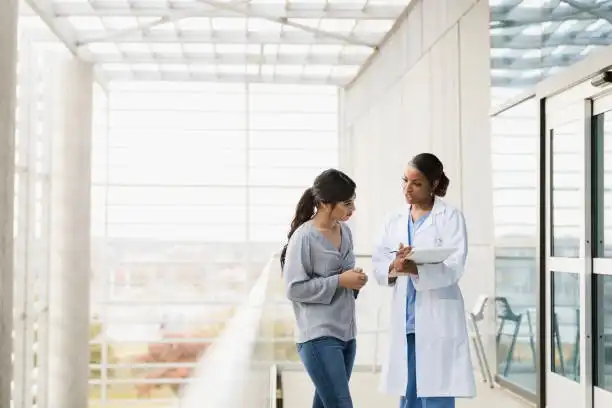Discovering a lump in your lower back can be concerning, as it may signal an underlying health issue. Whether it’s a small bump or a noticeable mass, it’s essential to understand the possible causes and seek medical attention if necessary.
One potential cause of a lump in the lower back is a lipoma. Lipomas are benign tumors composed of fat cells that form just beneath the skin. While they are typically harmless, they can grow larger and become painful or noticeable.
Another possible cause for a lump in the lower back is an abscess. An abscess is a collection of pus that forms due to an infection. It can cause swelling, redness, and tenderness in the affected area. Abscesses often require medical treatment, such as drainage or antibiotics, to resolve the infection.
In some cases, a lump in the lower back may indicate a herniated disc. A herniated disc occurs when the soft cushioning material between the vertebrae in the spine ruptures, causing the disc to push against nearby nerves. This can lead to pain, numbness, and weakness in the lower back and legs. Treatment for a herniated disc may include physical therapy, medication, or surgery, depending on the severity of the condition.
What is a lump in the lower back?
A lump in the lower back refers to an abnormal growth or swelling that can be felt or observed in the area of the back between the ribs and the pelvis. This lump may vary in size, shape, and consistency, and can be accompanied by pain, tenderness, or other symptoms depending on the underlying cause.
There are several possible causes for a lump in the lower back, including muscle knots or trigger points, lipomas (benign fatty tumors), cysts, abscesses, or hernias. Muscle knots or trigger points are tight bands of muscle fibers that can form due to muscle overuse or injury, and they can feel like small, hard lumps under the skin. Lipomas are usually soft, movable masses of fat cells, while cysts are fluid-filled sacs that may be benign or potentially harmful. Abscesses are pockets of pus that can develop due to infection, and hernias occur when an organ or tissue pushes through a weak spot in the surrounding muscle or connective tissue.
If you discover a lump in your lower back, it is important to consult with a healthcare professional for an accurate diagnosis and appropriate treatment. Depending on the cause and severity of the lump, treatment may include rest, physical therapy, medication, drainage or removal of the lump, or surgery.
Causes of a lump in the lower back
A lump in the lower back can have various causes, ranging from benign to more serious conditions. One possible cause is a lipoma, which is a non-cancerous growth of fat tissue. This type of lump is typically soft and movable under the skin.
Another potential cause is a cyst, which is a sac-like structure that can be filled with fluid, pus, or other materials. Cysts in the lower back can be caused by various factors, such as infection or blockage of a duct.
In some cases, a lump in the lower back may be a result of an injury or trauma. This can include conditions such as a hematoma, which is a collection of blood outside of blood vessels, or a herniated disc, which occurs when the soft tissue between the vertebrae of the spine becomes damaged or dislocated.
Less commonly, a lump in the lower back may be a sign of a more serious condition, such as a tumor. Tumors can be benign or cancerous, and it is important to consult a healthcare professional for further evaluation if a lump is persistent, growing, or causing pain or other symptoms.
Overall, there are several potential causes of a lump in the lower back, ranging from benign growths to more serious conditions. It is important to seek medical attention to determine the exact cause and appropriate treatment plan.
Symptoms of a lump in the lower back
A lump in the lower back can present with various symptoms that may indicate an underlying condition or injury. These symptoms can include:
- Pain: Individuals may experience localized or radiating pain in the lower back, which can be dull, sharp, or throbbing.
- Swelling: The presence of a lump in the lower back can cause visible swelling, indicating inflammation or fluid accumulation.
- Tenderness: The lump may be tender to touch, causing discomfort or pain when pressure is applied.
- Restricted movement: Depending on the size and location of the lump, it may restrict range of motion in the lower back and impair daily activities.
- Numbness or tingling: In some cases, the lump may compress nerves in the lower back, leading to sensations of numbness, tingling, or weakness in the surrounding area.
- Changes in bowel or bladder function: Rarely, a lump in the lower back may be associated with spinal cord compression, resulting in bowel or bladder dysfunction, such as difficulty controlling urine or bowel movements.
If you notice a lump in your lower back and experience any of these symptoms, it is important to seek medical attention for proper evaluation and diagnosis. These symptoms can vary depending on the underlying cause of the lump, which may range from muscle strains and herniated discs to more serious conditions like tumors or infections.
Diagnosis of a Lump in the Lower Back
If you have discovered a lump in your lower back, it is important to seek medical attention for a proper diagnosis. The presence of a lump in this area can be a cause for concern and may indicate underlying conditions or health issues that require treatment.
When you visit a healthcare professional to diagnose a lump in your lower back, they will typically start by conducting a physical examination. They will carefully inspect the lump, paying attention to its shape, size, and location. The healthcare provider may also ask you about any symptoms you may be experiencing, such as pain, tenderness, or any changes in the lump over time.
Based on the findings from the physical examination, your healthcare provider may then recommend further tests to determine the cause of the lump. These tests may include imaging studies, such as X-rays, CT scans, or MRI scans, which can provide detailed images of the lump and the surrounding structures. Additionally, a biopsy may be performed, where a small sample of the lump is taken and sent to a laboratory for analysis.
Once a diagnosis is made, your healthcare provider will discuss the results with you and outline a treatment plan if necessary. The treatment plan will depend on the underlying cause of the lump, which could range from a benign cyst or lipoma to a more serious condition like a tumor or infection. It is essential to follow your healthcare provider’s recommendations and undergo any necessary treatments to address the underlying issue and ensure your overall well-being.
- If you discover a lump in your lower back, don’t panic, but do seek medical attention for a proper diagnosis.
- A physical examination is typically the first step in diagnosing a lump in the lower back.
- Further tests, such as imaging studies or a biopsy, may be recommended to determine the cause of the lump.
- Your healthcare provider will discuss the diagnosis with you and provide a treatment plan if necessary.
- Follow your healthcare provider’s recommendations and undergo any necessary treatments to address the underlying issue.
Treatment options for a lump in the lower back
If you have discovered a lump in your lower back, it is important to determine the cause before considering treatment options. Consulting a healthcare professional is recommended to receive a proper diagnosis and discuss potential treatment plans.
Depending on the underlying cause of the lump, treatment options may vary. In cases where the lump is a result of a benign condition, such as a lipoma or cyst, surgical intervention may be necessary to remove the lump. This procedure is typically performed by a skilled surgeon under local or general anesthesia.
If the lump is determined to be a result of an infection, antibiotic therapy may be prescribed to help eliminate the infection and reduce the size of the lump. In some cases, drainage of a fluid-filled lump may also be necessary to promote healing and alleviate discomfort.
For lumps that are associated with trauma or injury, conservative treatment options such as rest, physical therapy, and anti-inflammatory medication may be recommended. These methods aim to reduce inflammation, promote healing, and alleviate any pain or discomfort associated with the lump.
In rare cases, a lump in the lower back may be indicative of a more serious underlying condition, such as a tumor or herniated disc. In such situations, the healthcare provider may recommend further diagnostic tests, such as imaging studies or biopsies, to determine the appropriate course of treatment. Treatment options for these conditions may include surgical intervention, radiation therapy, or chemotherapy, depending on the individual case.
In summary, treatment options for a lump in the lower back depend on the underlying cause. It is important to consult a healthcare professional for an accurate diagnosis and to discuss appropriate treatment plans tailored to your specific condition.
Prevention and Tips for Managing a Lump in the Lower Back
Experiencing a lump in the lower back can be discomforting and concerning. However, there are several preventive measures and management tips that can help alleviate the symptoms and promote overall well-being.
1. Maintain a Healthy Weight
Being overweight or obese can put excessive pressure on the lower back, leading to the formation of lumps or other related conditions. Maintaining a healthy weight through a balanced diet and regular exercise can reduce the likelihood of developing such lumps.
2. Practice Proper Posture
Correct posture plays a crucial role in preventing lumps in the lower back. Maintaining a straight spine and avoiding slouching or hunching can alleviate strain on the back muscles and reduce the risk of developing lumps. Additionally, using ergonomic chairs and pillows that provide support can also help maintain proper posture.
3. Engage in Regular Exercise
Regular physical activity can strengthen the muscles in the lower back, reducing the risk of developing lumps or other related conditions. Engaging in exercises that target the core and back muscles, such as yoga or Pilates, can improve flexibility and promote a healthy spine.
4. Lift Heavy Objects Properly
Improper lifting techniques can strain the muscles in the lower back, potentially leading to the formation of lumps. When lifting heavy objects, it is important to bend at the knees and use the leg muscles instead of relying solely on the back. Additionally, using lifting aids or asking for assistance when needed can prevent unnecessary strain.
5. Take Regular Breaks
Extended periods of sitting or standing can put stress on the lower back, increasing the risk of developing lumps. Taking regular breaks to stretch, change positions, or perform simple exercises can help relieve muscle tension and prevent the formation of lumps.
6. Seek Medical Advice
If a lump in the lower back persists or causes severe pain or discomfort, it is important to seek medical advice. A healthcare professional can provide a proper diagnosis, recommend appropriate treatment options, and offer personalized guidance for managing the lump effectively.
By following these prevention tips and adopting healthy lifestyle habits, individuals can minimize the risk of developing lumps in their lower back and maintain optimal back health. However, it is always important to consult a healthcare professional for personalized advice and guidance.






